Nairobi Arboretum is a dry forest type of vegetation. It holds a large collection (over 350 species) of indigenous and exotic of trees, shrubs and grasses from tropics and throughout the world. Its diverse vegetation includes a variety of mature trees and woody shrubs. Two tree inventories have been carried out (1997 and 2017) to analyse the existing distribution of tree species within the Nairobi Arboretum Forest. During this biophysical assessment of the Arboretum, trees with trunks over a diameter of 15 cm, identified and recorded. Small saplings and woody shrubs were not included. During the two exercise, each tree was carefully noted for its position, identity and condition. Following months of field work, information from over 5000 individual trees was compiled. 350 tree species with a diameter of 15cm or more were examined. About half were indigenous and the other half exotic plant species, originating from all parts of the world.
.
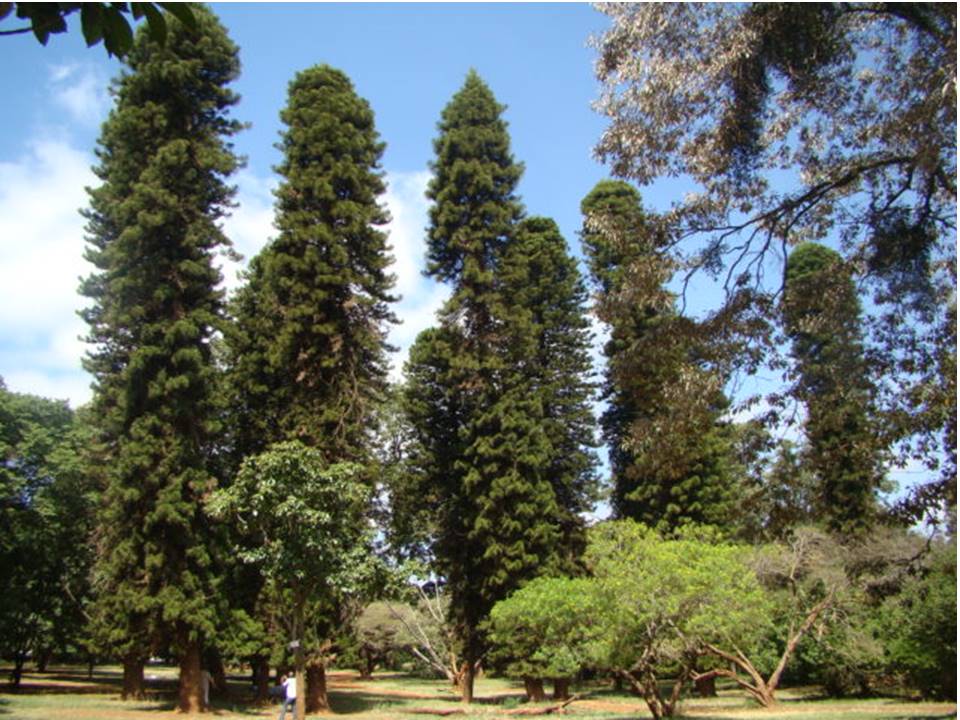
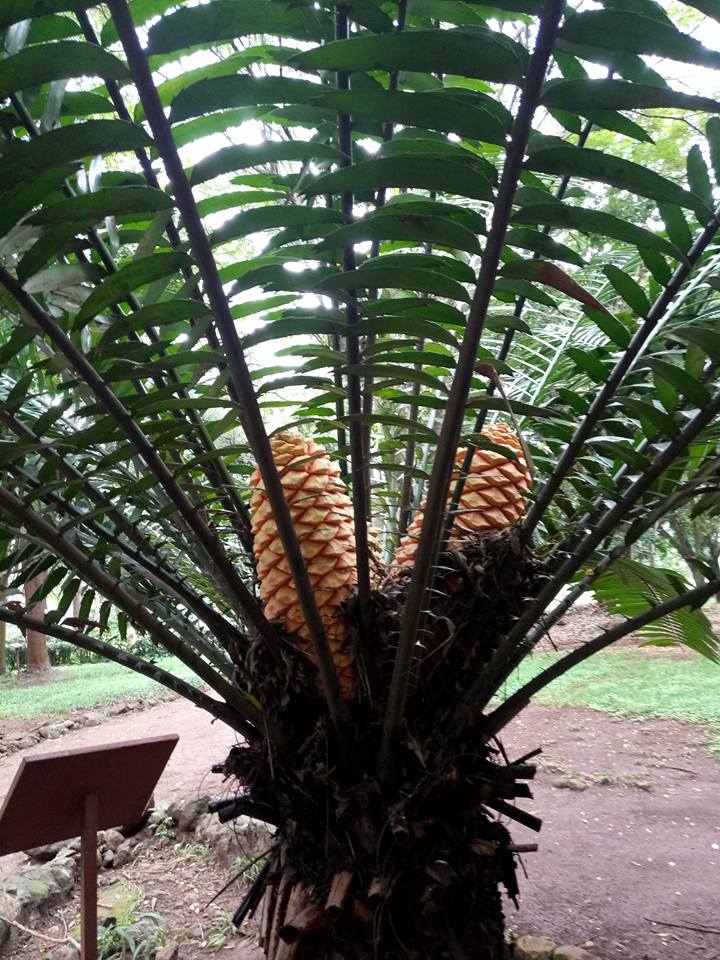
Other plants life in the Arboretum, includes climbers, shrubs, herbs, orchids, mosses and fungi, have not been explored fully hence, much remains to be discovered.

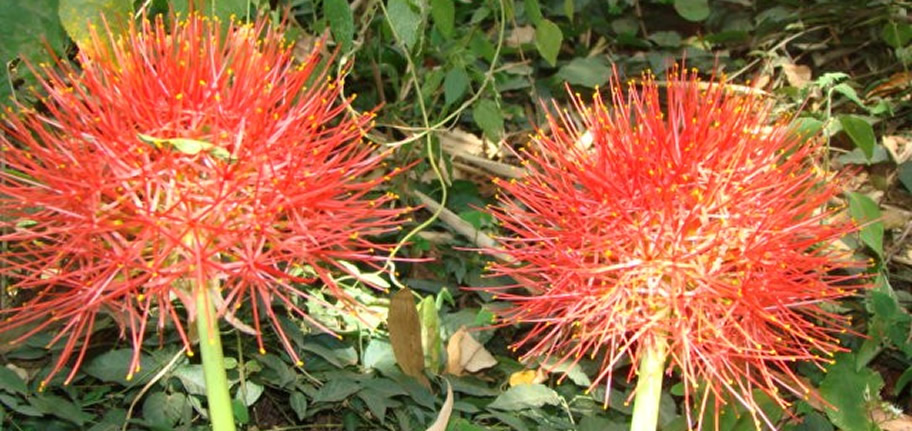
Much of the existing vegetation is overgrown and in need of pruning, thinning and removal (in the case of dangerous hanging trees and branches). Little maintenance work has been carried out in recent years and weed species (for example Lantana and Furcraea) have, in some areas, taken over the under storey layer, suffocating more fragile species. Considerable selective clearance and pruning work is therefore urgently required to prevent further loss of species. After clearing, consideration should be given to planting unrepresented species to be led by FONA, KFS and NMK.
Tree Uses
Kenyans have many uses for selected plants which grow in their area, including the trees. Tree uses include timber, medicine, poison, food flavouring, edible fruit, leaves, seeds, oil, soap, carving, fodder, walking sticks, hedges, stuffing for bedding and many other uses. In addition, almost every tree can provide firewood, still the most commonly uses fuel in most Kenyan households. Many trees are multipurpose, for example, the yellow flowered Markhamia lutea, “Muu” in Kikuyu, seen easily in the Central Lawn. The tiny winged seeds disperse easily and germinate easily so have been planted to provide mulch, fodder, firewood and a windbreak. It grows fast and coppices well but, if left to maturity, it provides a good general-purpose timber.
Indigenous Trees
Suitable trees representing over60 different botanical families were introduced to the Arboretum from all over Kenya. The four most common trees with over 100 specimens are Croton megalocarpus, (Croton – english), (Mukinduri’ – Kikuyu) has over 300 specimen counted. The elegantly structured Croton tree has typically layered branches, and the leaves are dark above, pale below. This tree was chosen by FONA for its logo. Brachylaena huillensis, the Silver oak, (Muhuhu- Kikuyu) has over 280 trees in Arboretum. It is commonly used for carving. Podocarpus falcatus, Podo, EA Yellow wood has 136 trees and Markhamia lutea. Nile tulip, Nile trumpet is represented by 116 trees. Other 25 species have over 20 trees each represented in the Arboretum.
THE EXOTIC TREES IN THE ARBORETUM
The exotic trees in Nairobi arboretum make almost half of all trees in the park and were mostly planted because of their colourful blossom. The exotic trees originate from almost every botanical zone around the world. There are trees from AUSTRALIA, the AMERICAS, EUROPE, ASIA, the rest of Africa and ocean Islands.
35 trees in the Arboretum come from AUSTRALIA. These include Hoop pines (Araucaria cunninghamii). Bunya bunya’ in the Aboriginal language (Araucaria bidwillii), both near Atrium Circle. Then there is unimistakable Open the single Moreton Bay chestnut (Castanospermum australe), a dark green rounded tree.
From South America, Jacaranda mimosifolia, (Jacaranda, Brazilian rosewood) the most prominent tree in the arboretum with more 500 specimens recorded. The Yellow poui (Tabebuia chrysantha) outshines all other trees around September-November, where the small rounded trees are crowded with yellow flowers on leafless branches, making wonderful photo opportunities.
Others of interest are Coral trees from the WEST INDIES (Erythrina corallodendron, Erythrina velutina or the single representative from the PHILIPPINES is the Mindanao gum (Eucalyptus deglupta) on the riverbank. Its straight trunk, possibly the tallest in the Arboretum, reveals colourful streaks as peeling bark flakes off.
From SOUTH EAST ASIA is the Indian rubber tree (Ficus elastica), a massive tree, planted in 1908. There is also a group of a splendid Cypresses, the Kashmir cypress (Cupressus cashmeriana) and Bhutan cypress (C. torulosa), grown from seed brought from the hills of the Dehra Dun Forest Station in INDIA.
There are many trees from CENTRAL AND SOUTHERN AFRICA. The Weeping schotia (Schotia brachypetala) bears clusters of crimson-pink flowers. “Weeping” nectar from the blossoms attracts all the sunbirds in the area.
A single Lucky bean or Red-hot poker tree (Erythrina Iysistemon) grows on the grassy area beside Riverside
Walk. Many Red-hot poker trees can be seen in Nairobi streets, with brilliant orange flowers in July. On the Central Lawn the African false wattle (Peltophorum africanum), with its yellow flowers attract many butterflies as well as sap-sucking bugs, and the tree may “rain” water excreted by the myriad insects above.
The exotic bamboos are found thriving along the river where they have grown to an enormous bulk plants. The Arboretum has palm trees from several countries, as well as the indigenous Wild date palm (Phoenix reclinata). Only two Canary palms (Phoenix canariensis) now survive from “a complete avenue” that was planted either side of Arboretum Walk in 1911 (
The point of concern in the arboretum is the planting policy. The majority the tree collection is for the most part an ad hoc mixture of exotic and indigenous trees and shrubs lacking any overall planting and development policy. This random planting of trees with no obvious plan, makes it problematic or difficult to create thematic planting exhibits in any chosen location.
THE ARBORETUM NURSERY
Next to the lower gate there is a tree nursery managed by the Arboretum Forester to provide tree saplings and hedge plants for the public.
Tree Labels
Nairobi Arboretum as an elaborate tree labeling programme to help in identifying and cataloging plants. The labels inform the general public about the plant, including its common name, scientific name, family, place of origin and in some instances the uses.
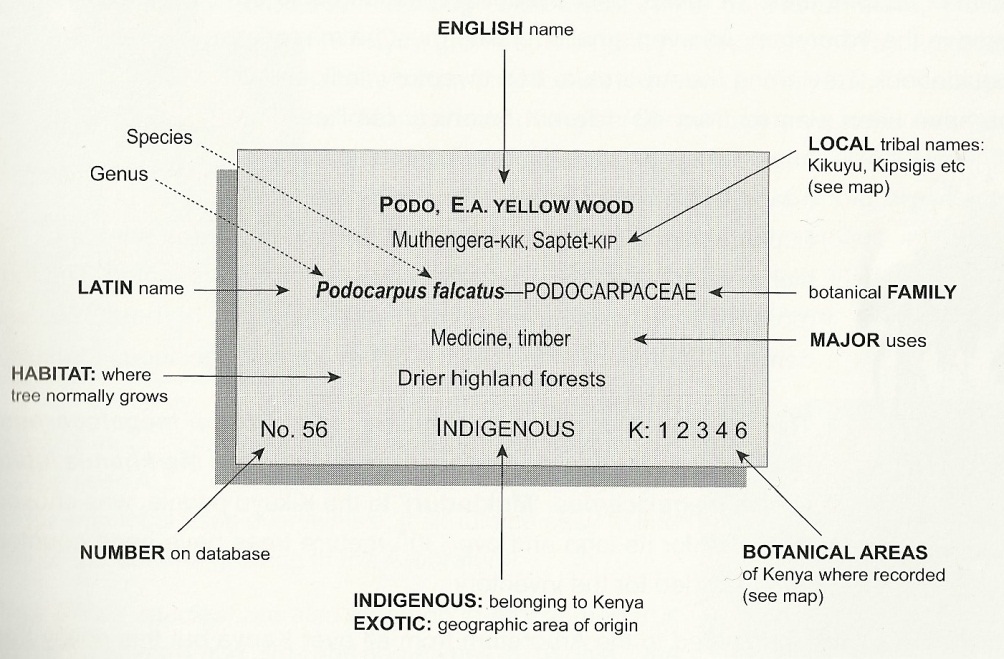
Many of the trees are labelled (some of the labels are as old as the Arboretum) with metal plates or paper laminates. The labels placed at the convenient levels on the trees so that arboretum visitors can easily view them. The labels enhance the educational value of the arboretum visitors and researchers alike.
Plant Interpretation Panels
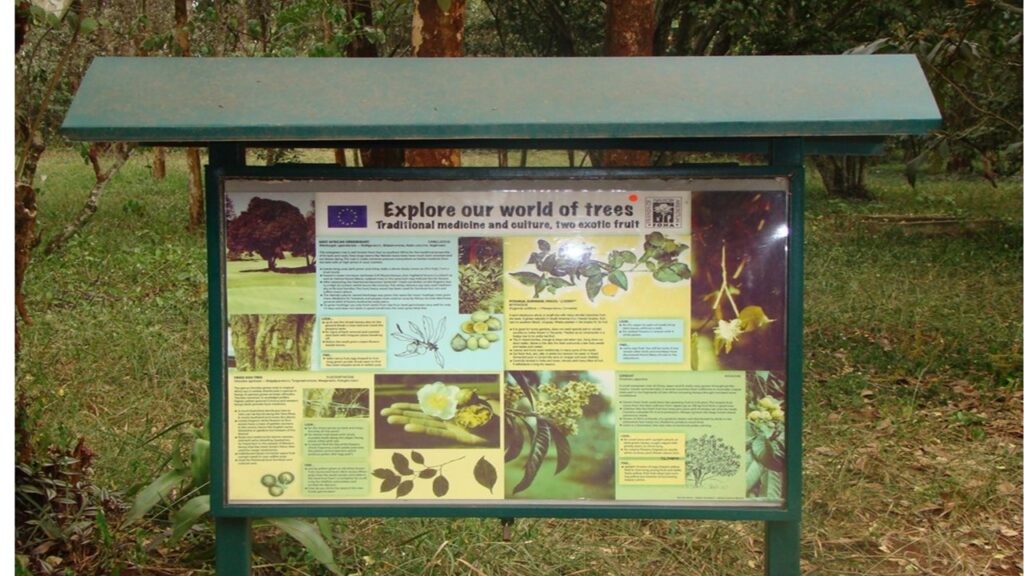
Ten trees in Nairobi Arboretum, have interpretation panels, which contain more details than the tree labels. The interpretation panels are placed at strategic intervals to help visitors understand the trees of Kenya as well as those which originally came from other countries. The panels have more detailed information:- colourful illustrations, more concise text photographs to engage and educate the public as well as promoting environmental awareness and conservation and in enhancing the visitor experience